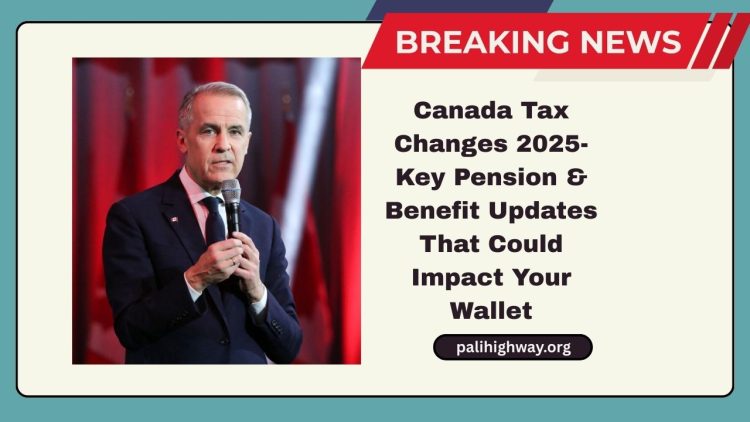Significant tax and benefit changes have taken effect in Canada for 2025, reshaping the financial outlook for workers, retirees, and families.
Adjustments to tax brackets, pension benefits, and savings contributions reflect the government’s response to inflation and broader economic conditions.
Understanding these updates is essential for optimizing financial plans and maximizing eligible credits.
Federal Income Tax Bracket Updates for 2025
To ensure taxation remains aligned with inflation, the federal government has adjusted the tax brackets for 2025.
While the five-tier structure remains unchanged, the thresholds have shifted slightly upward, reducing the overall tax burden for many middle-income Canadians:
- 15% on income up to $53,359
- 20.5% on income from $53,360 to $106,717
- 26% on income from $106,718 to $165,430
- 29% on income from $165,431 to $235,675
- 33% on income over $235,676
These modifications aim to preserve purchasing power and ensure more equitable taxation across income levels.
Higher Basic Personal Amount (BPA)
The Basic Personal Amount has increased to $16,129, up from $15,705 in 2024. This adjustment allows individuals to earn more before paying any federal income tax.
As a non-refundable tax credit, the increased BPA is especially beneficial for low- and middle-income Canadians.
CPP Benefits Rise to Reflect Inflation
In 2025, the Canada Pension Plan (CPP) sees a 4.4% benefit increase. This boost translates to:
- Maximum monthly benefit: $1,406.10
- Average monthly benefit: approximately $787.50
These enhancements help retirees maintain their standard of living amid rising costs.
TFSA Contribution Limit Holds Steady
The annual Tax-Free Savings Account (TFSA) contribution limit remains at $7,000 for 2025.
For those who have been eligible since the TFSA’s launch in 2009, the cumulative contribution room now totals $102,000. Contributions grow tax-free, and withdrawals do not incur taxes.
RRSP Contribution Limit Increased
For 2025, the Registered Retirement Savings Plan (RRSP) contribution limit has been raised to $32,490.
This change provides additional room for tax-deferred retirement savings, benefiting individuals with higher earnings who are planning for long-term financial security.
OAS Payments Receive a Modest Bump
Old Age Security (OAS) payments have risen by 1.3% to align with inflationary trends:
- $727.67/month for recipients aged 65 to 74
- $800.44/month for those 75 and older
These figures are based on residency eligibility and continue to support seniors with fixed incomes.
Employment Insurance (EI) Premium Rate Changes
The EI premium rate for 2025 stands at 1.64%, with a maximum annual premium of $1,077.48, based on an income cap of $65,700.
These premiums support Canadians during periods of unemployment and help fund job-related benefits.
First Home Savings Account (FHSA) Remains Unchanged
The First Home Savings Account (FHSA) continues to be a vital resource for aspiring homeowners. While contribution limits remain the same, the tax advantages make it a compelling option:
- Annual contribution limit: $8,000
- Lifetime limit: $40,000
Withdrawals used for qualifying home purchases are tax-free, making it an effective tool for new buyers.
GST/HST Credit Updates Based on 2023 Tax Returns
The Goods and Services Tax/Harmonized Sales Tax (GST/HST) credit for July 2024 to June 2025 reflects 2023 tax returns:
- $529 for single individuals
- $680 for couples
- $179 per child under 19
These quarterly, tax-free payments provide meaningful support to low- and moderate-income families coping with rising living costs.
With these 2025 tax changes now in effect, Canadians are encouraged to review their financial strategies and ensure they’re taking full advantage of available benefits and credits.
These updates are designed to ease the financial load on individuals and families while reinforcing retirement and homeownership planning.
FAQs
How much did CPP benefits increase in 2025?
CPP benefits rose by 4.4% in 2025, with the maximum monthly payment reaching $1,406.10.
What is the new RRSP contribution limit for 2025?
The RRSP contribution limit has increased to $32,490, enabling more tax-deferred retirement savings.
Are TFSA contributions taxed in 2025?
No, contributions to a TFSA grow tax-free, and withdrawals are also non-taxable as long as the rules are followed.

